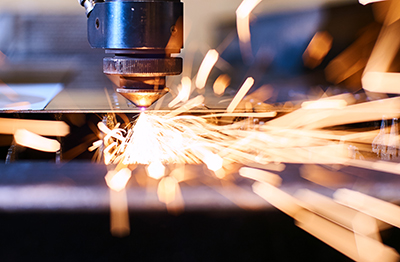Laser cutting technology plays a crucial role in making full e-mobility a reality for automotive manufacturers. While lasers have been used for decades in traditional vehicle production, their importance only grows as the industry transitions to electric and hydrogen-powered vehicles. In fact, many industry leaders see laser cutting as an essential tool for building the next generation of sustainable transportation. Over the past two decades, auto manufacturers have gradually adopted e-mobility technologies. A combination of environmental concerns, regulatory pressure, and consumer demand has pushed the industry toward a future where fossil fuel-powered vehicles are no longer the norm. The shift to electric or hydrogen-based drivetrains is not just a trend—it's a necessary evolution for the industry. Realizing full e-mobility requires more than just producing electric vehicles. It also involves developing new infrastructure, such as charging stations, maintenance centers, and power distribution systems. Governments and regulators are increasingly involved to support this transition and ensure that e-mobility becomes a viable and attractive option for all consumers. The benefits of e-mobility are clear. Environmentally, it reduces reliance on fossil fuels, which helps lower carbon emissions and improve air quality. From an engineering perspective, it encourages innovation in lightweight materials, energy efficiency, and performance. Plus, the rise of e-mobility is expected to create new job opportunities in advanced manufacturing and renewable energy sectors. You might be wondering how laser cutting relates to e-mobility. The answer is simple—without precision cutting tools like lasers, many of the components required for electric vehicles would be difficult or even impossible to produce. For example, lithium-ion batteries rely on thin, coated foils made from highly conductive materials. These foils need to be cut with extreme accuracy, and fiber lasers are ideal for this task. New structural components are also being developed for electric vehicles, including chassis parts and battery enclosures. These parts must be both strong and precisely manufactured to ensure optimal performance and safety. Laser cutting allows for tight tolerances and high-quality finishes, making it a preferred method in modern automotive production. Additionally, laser cutting supports the use of advanced materials like aluminum alloys and composites, which are key to reducing vehicle weight and improving energy efficiency. By maintaining material integrity while achieving precise cuts, lasers help manufacturers meet the demanding standards of the e-mobility era. Companies like Genesis Systems, a division of IPG Photonics, are at the forefront of providing innovative laser cutting solutions that enhance the efficiency and quality of automotive manufacturing processes. Peanut Butter Production Line,Peanut Butter Machine Line,Automatic Peanut Butter Line,Peanut Butter Production Machine Line Yantai Maoyuan Food Machinery Manufacturing Co.,Ltd , https://www.peanutmachinery.comWhat is E-Mobility and Why Is Laser Cutting the Preferred Choice in Automotive Manufacturing?

E-Mobility Gains Momentum in the Automotive Sector
How Laser Cutting Supports the Development of E-Mobility